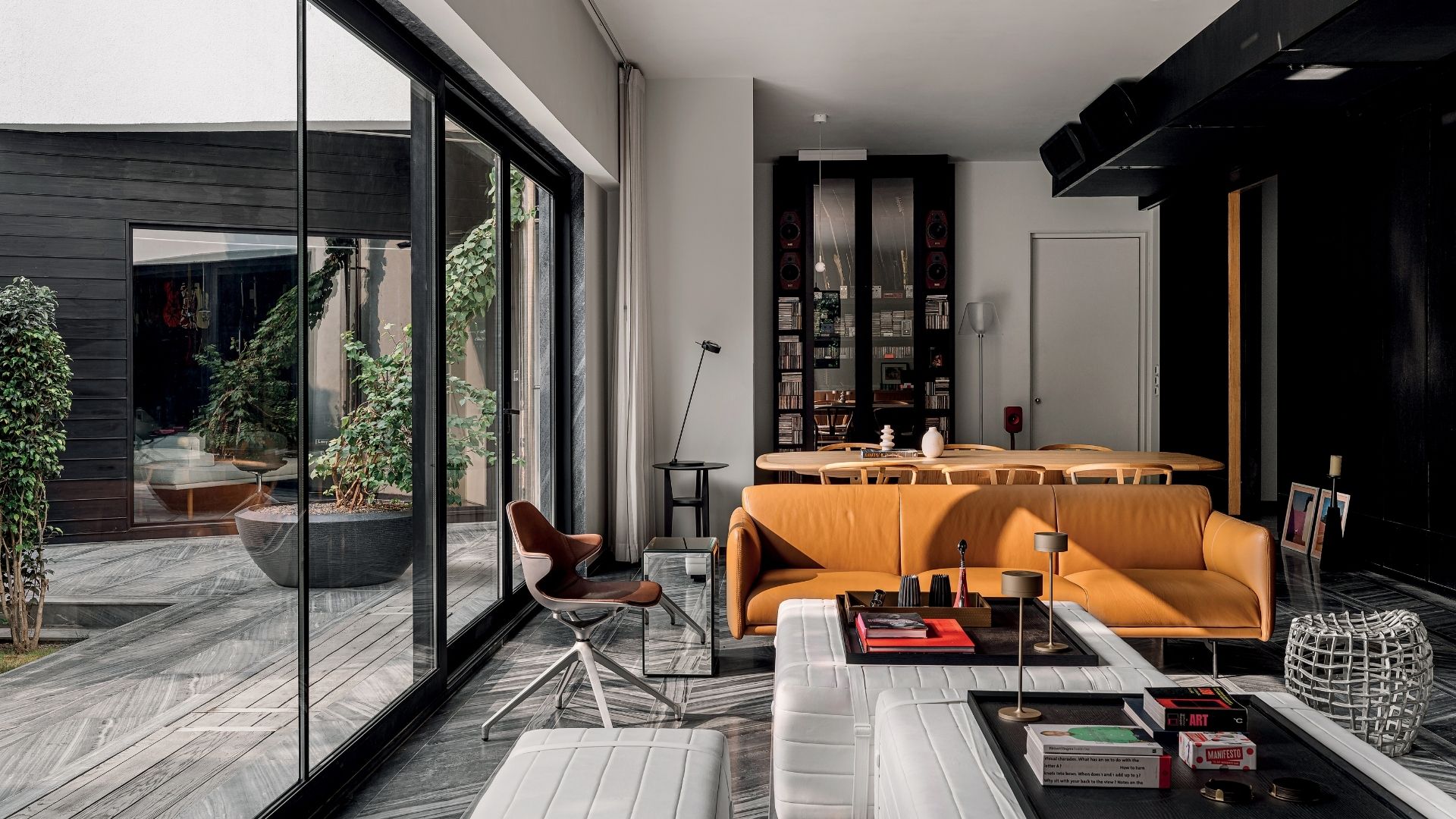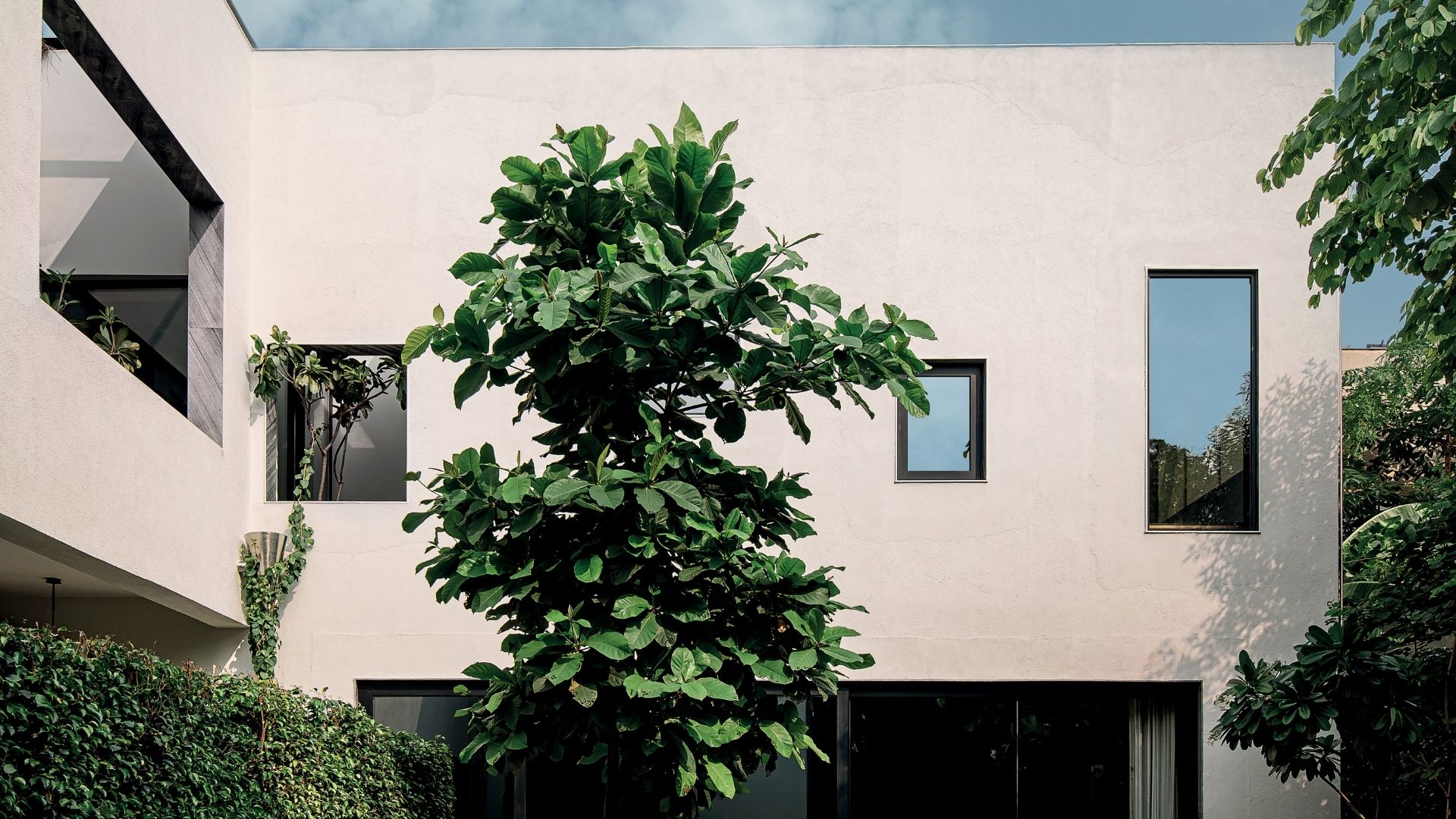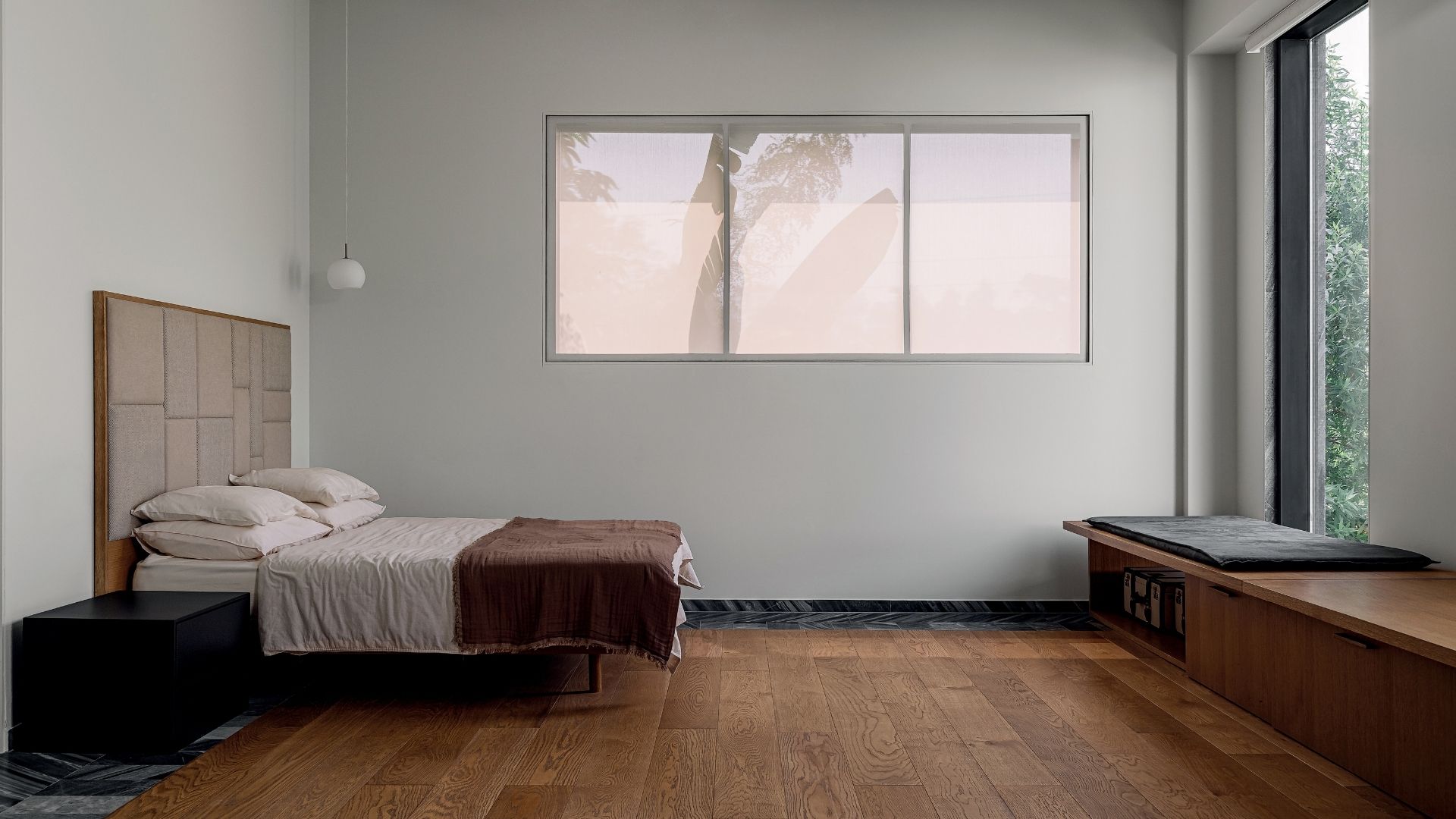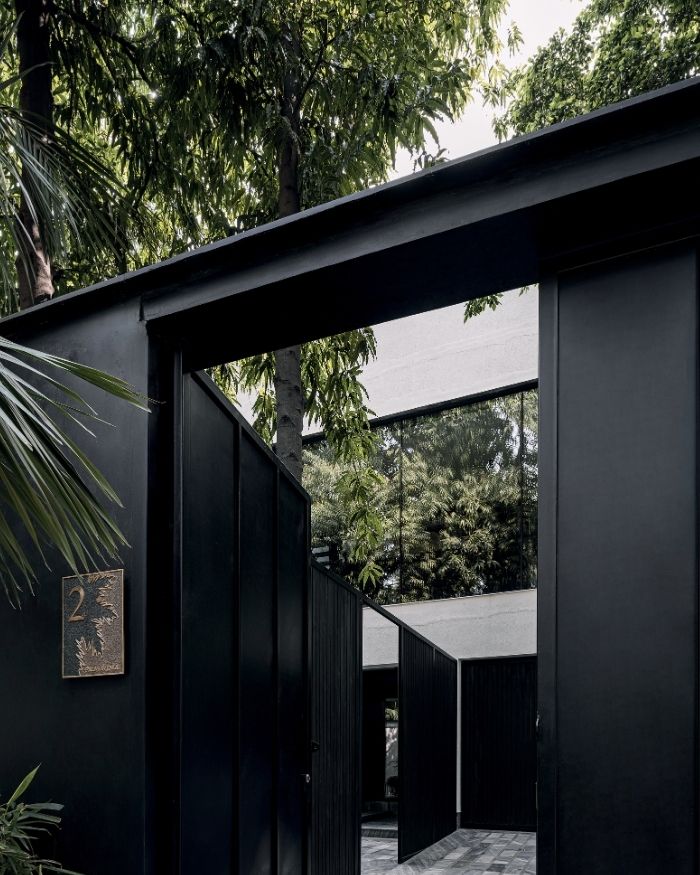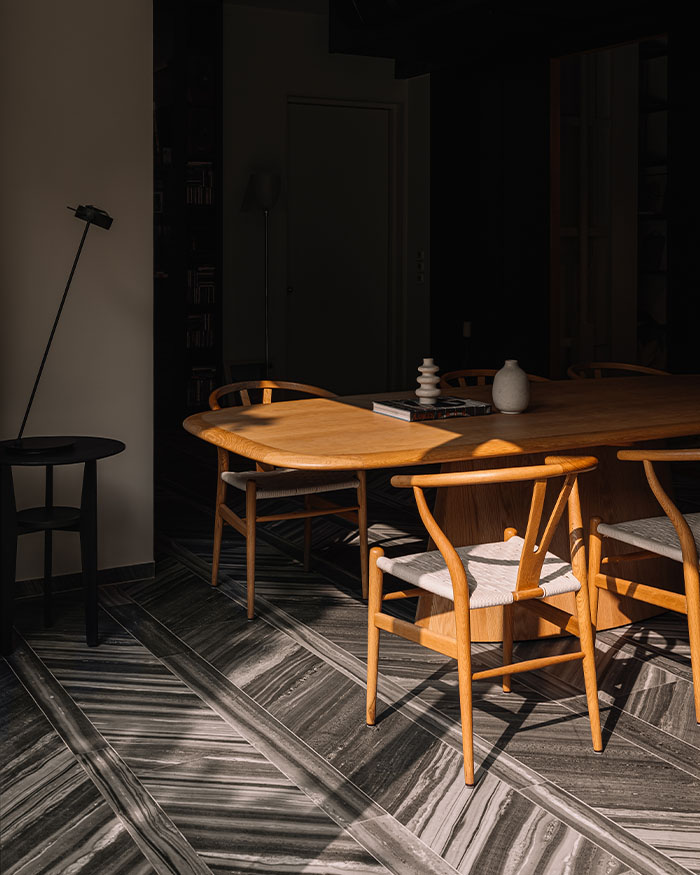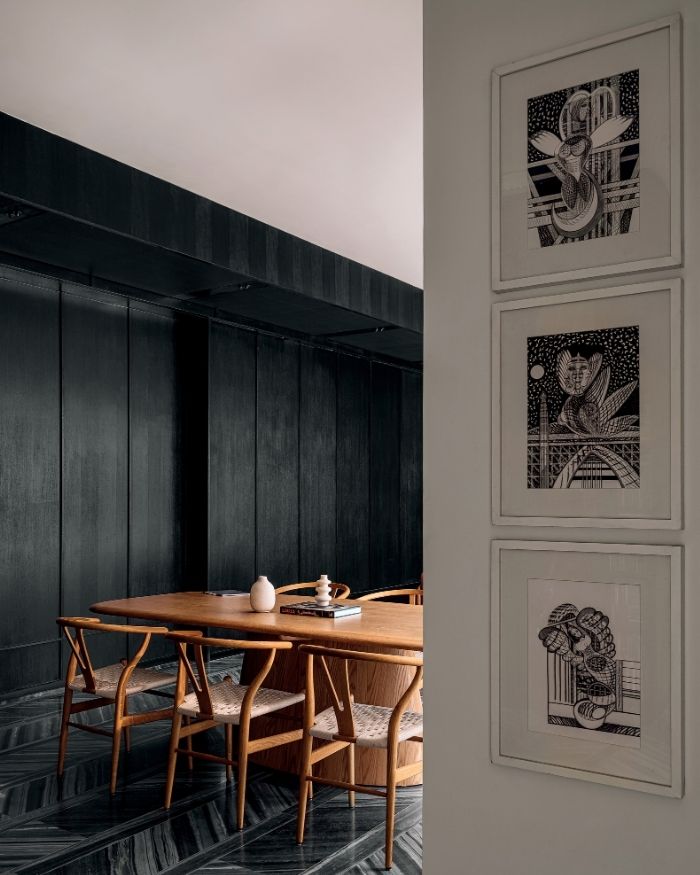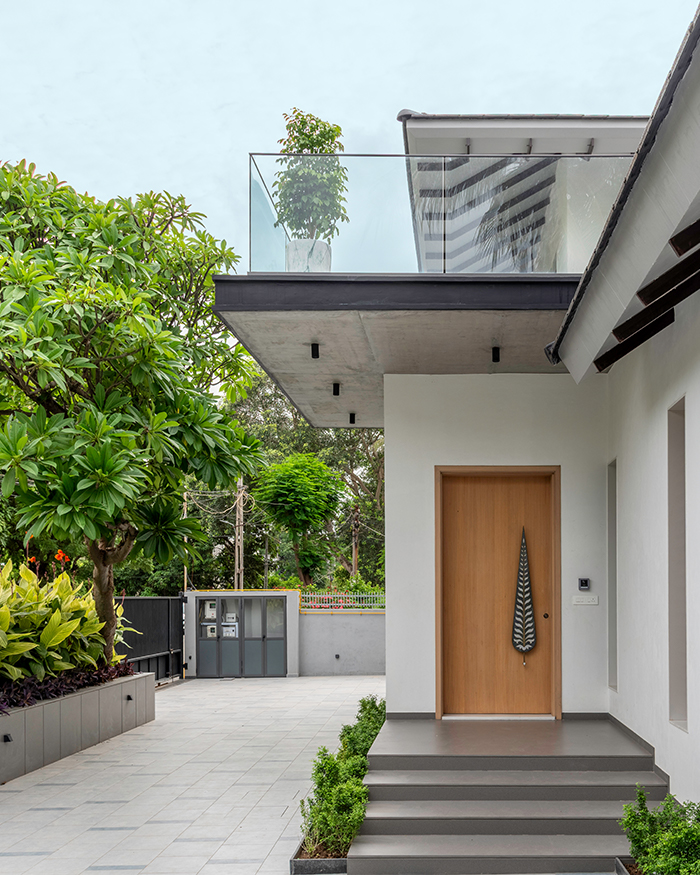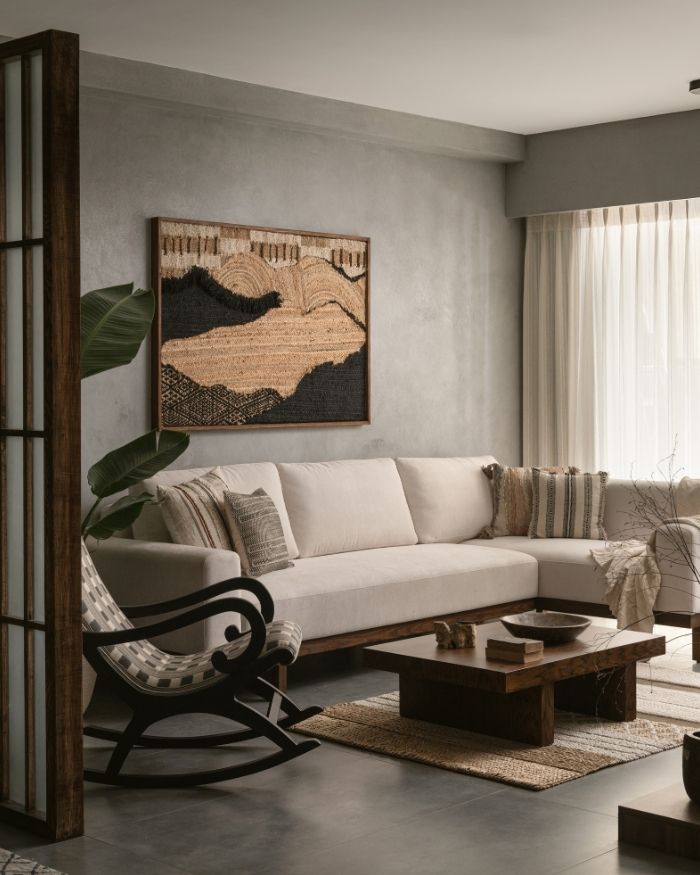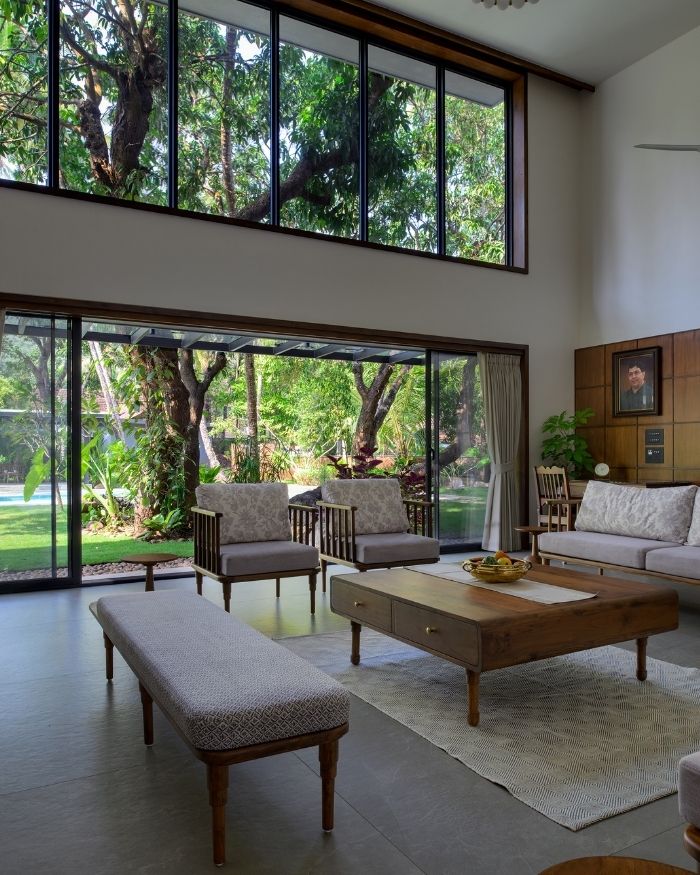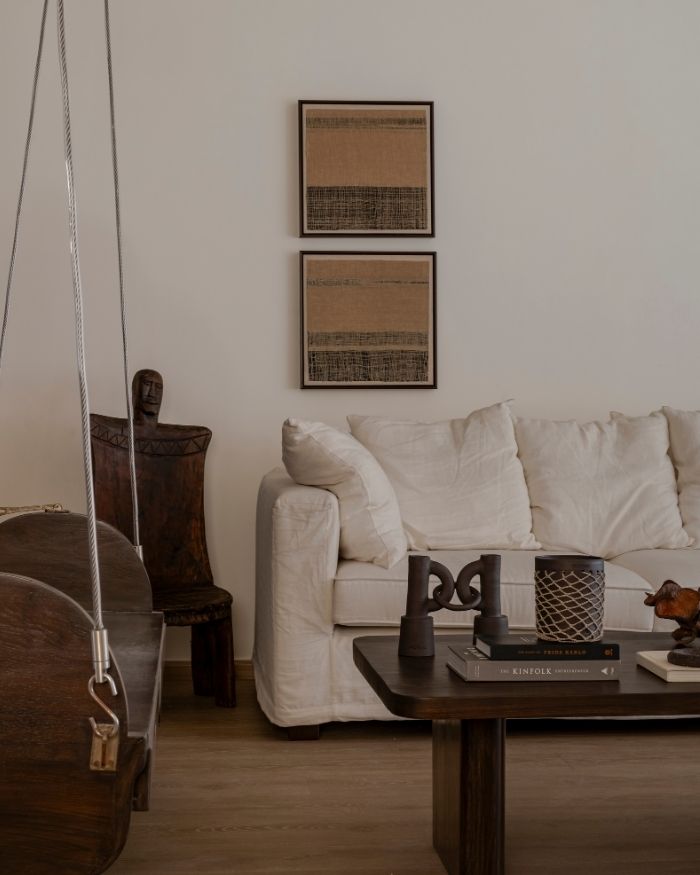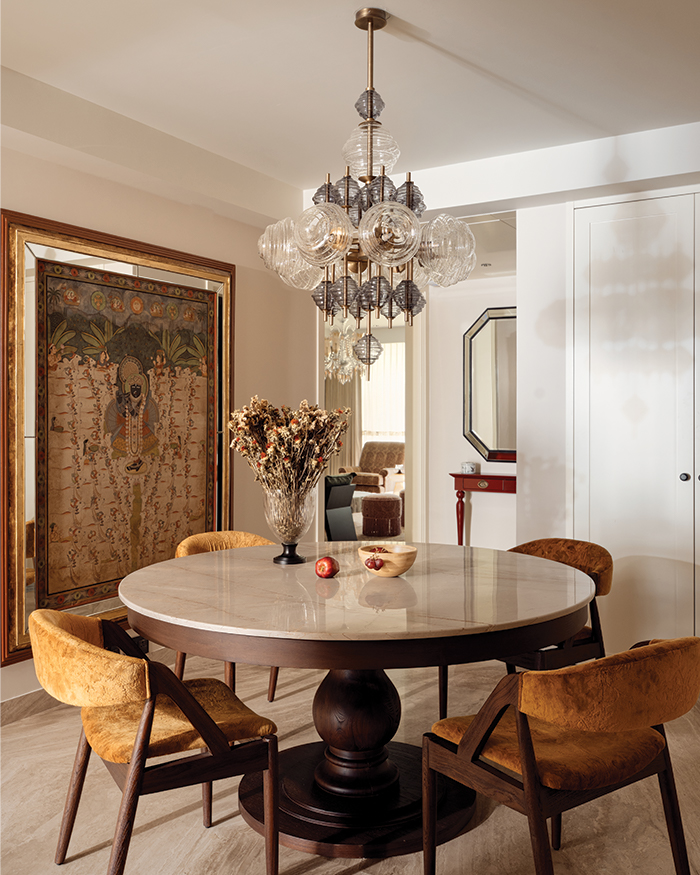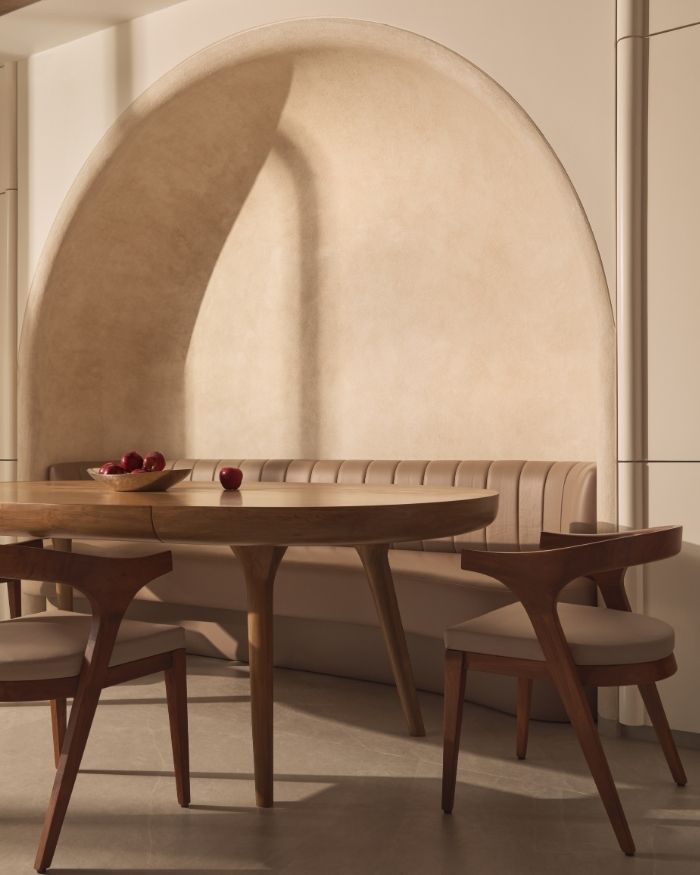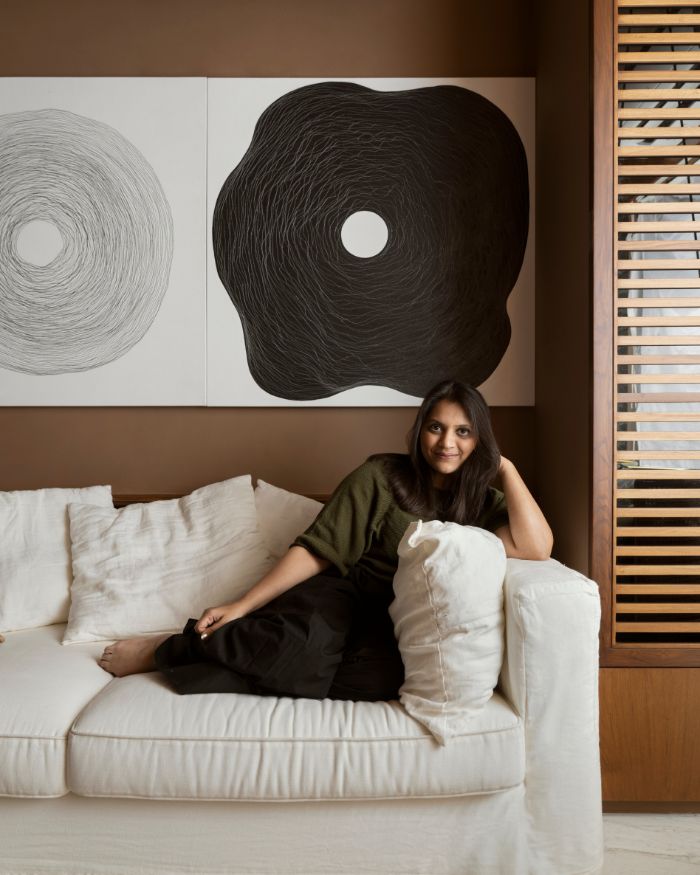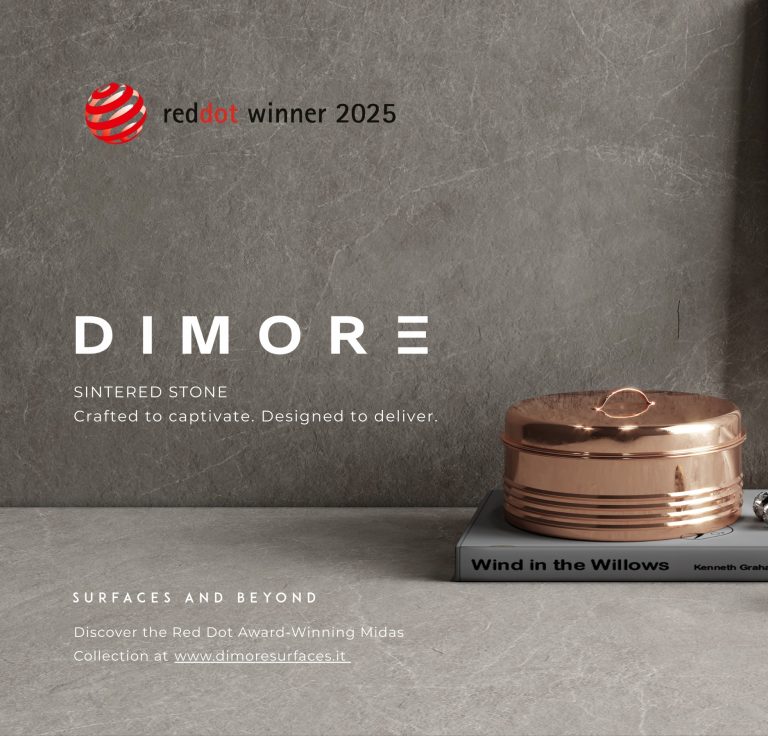There’s a certain clarity to Akshat Bhatt’s house that resists easy categorisation. It is not a manifesto dressed as architecture, nor a soft-focus family portrait. It sits somewhere else, perhaps at the intersection of technical precision and lived informality, shaped by a restless mind more interested in asking questions than presenting a final image. For someone whose practice is defined by control, his home, where he lives with his parents alongside his partner and fellow architect Sneha Gurjar, is fast, frugal (frugal is relative, you will soon find out) and personal. The duo ensured that the project was built in a record period of 11 months. There are no false ceilings and decorative surfaces. Five rules anchor the material palette: no exposed concrete, no kota, no kadappa, no exposed brick and no Italian marble. Instead, floors are finished in Indian marble that cost 20 INR per square feet. The walls are treated with a textured paint finish that deliberately avoids the precision of his otherwise immaculate projects at Architecture Discipline. A technical and aesthetic choice to build robustly, quickly, and intelligently, do not mistake the finishes for fetishising materials. The materials and suppliers were determined purely for speed of delivery and execution, for efficiency, consistency and availability over indulgence. The result is a calm, silent and neutral material palette that holds the architecture rather than competing with it, while allowing light and proportion to lead.
“Height, light and space are the real luxuries here”
— Akshat Bhatt


